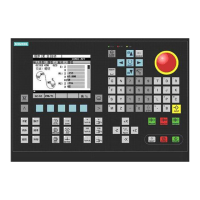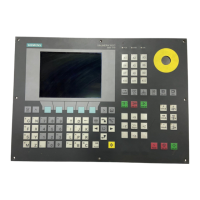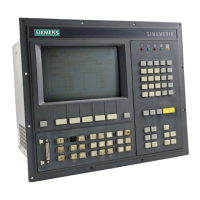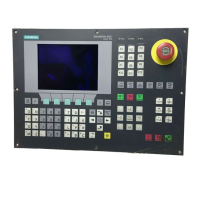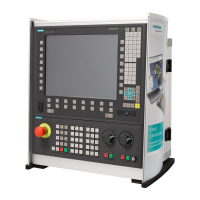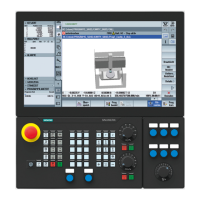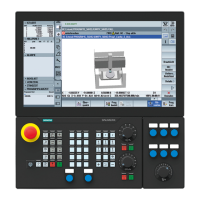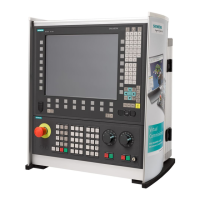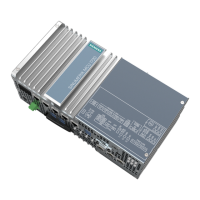Transformations
6.2 Three, four and five axis transformation (TRAORI)
Job planning
Programming Manual, 07/2010, 6FC5398-2BP40-0BA0
335
Description
Machine manufacturer
MD $MC_ORI_DEF_WITH_G_CODE is used to specify how the programmed angles
A2, B2,
C2
are defined:
The definition is according to MD $MC_ORIENTATION_IS_EULER (standard) or the
definition is according to G group 50 (
ORIEULER, ORIRPY, ORIVIRT1, ORIVIRT2).
MD $MC_ORI_IPO_WITH_G_CODE is used to define which interpolation mode type is
active:
ORIWKS/ORIMKS or ORIAXES/ORIVECT.
JOG mode
Interpolation for orientation angles in this mode of operation is always linear. During
continuous and incremental traversal via the traversing keys, only one orientation axis can
be traversed. Orientation axes can be traversed simultaneously using the handwheels.
For manual travel of the orientation axes, the channel-specific feed override switch or the
rapid traverse override switch work at rapid traverse override.
A separate velocity setting is possible with the following machine data:
$MC_JOG_VELO_RAPID_GEO
$MC_JOG_VELO_GEO
$MC_JOG_VELO_RAPID_ORI
$MC_JOG_VELO_ORI
Note
SINUMERIK 840D with "handling transformation package"
Using the "Cartesian manual traverse" function, in the JOG mode, the translation of
geometry axes can be set separately from one another in the reference systems MCS,
WCS and TCS.
References:
/FB2/ Description of Functions Extended Functions; Kinematic Transformation (M1)
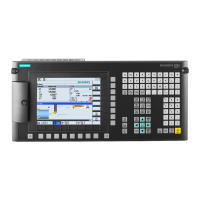
